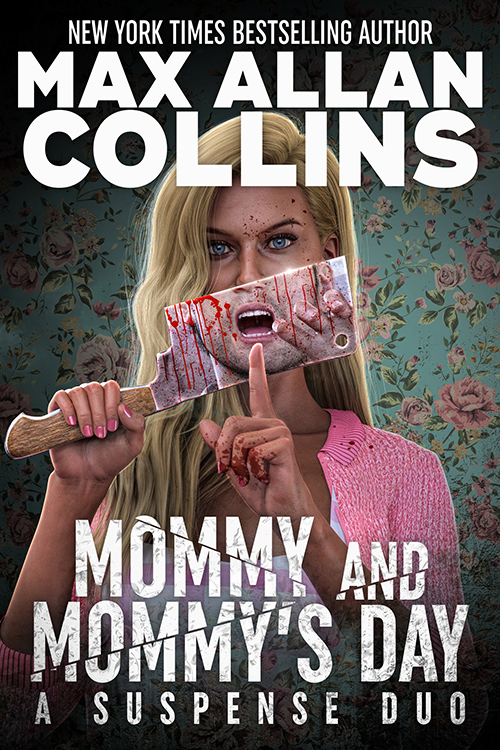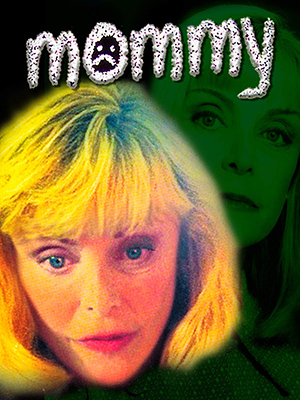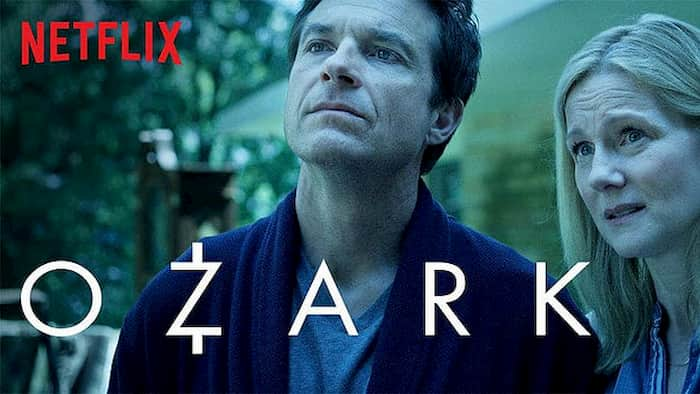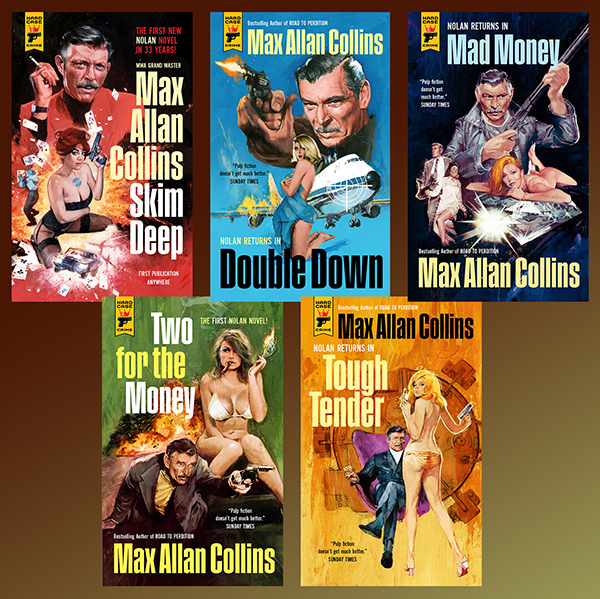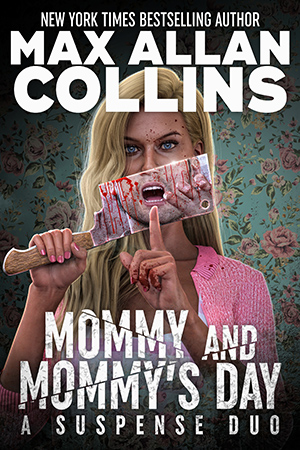
Mommy & Mommy’s Day: A Suspense Duo is available on Kindle right now for $2.99.
This is the first time the two Mommy novels have been collected, though it was always my hope to have them combined into one volume. I did not revise Mommy’s Day to exclude any redundant material, preferring to keep the books in their original form. But I believe they will work well as one long narrative.
As I mentioned here a few weeks ago, the novel version of Mommy begins earlier than the film and is a more complete rendition of the narrative, including a good deal more back story. When the late lamented Leisure Books approached me, back in the day, about doing a few horror titles for them, I immediately pitched Mommy (the second film hadn’t happened yet) and they were good enough to bite.
I haven’t hidden the fact that Mommy is an homage to The Bad Seed. The film’s casting of Patty McCormack, the original Rhoda Penmark, as the otherwise unnamed “Mrs. Sterling” (aka Mommy) tied that film to the famous original. But The Bad Seed was also a play by Maxwell Anderson (my favorite playwright) and a (in the beginning) novel by one of my favorite writers, William March. (The police detectives in the Mommy movies are named after Maxwell and March.) So the idea of writing Mommy’s story in novel form was something I had always hoped to do. (There was a “Mommy” short story that predated the film and the novel of the same name, written essentially as a story treatment to sell Patty McCormack on returning to a variation on her signature childhood character.)
Mommy is sometimes called an “unofficial sequel to The Bad Seed. There’s no question it’s a switch on the original, and in some ways an homage to it. And I was vague enough that if you want it to be a Bad Seed sequel, you can imagine it as such…but nothing I write in either the screenplay or novel confirms that.
And of course Mommy’s Day really has nothing to do with the novel, play or film versions of The Bad Seed. I made a point of the sequel not being a rehash of the first film/novel.
Right now you can’t order a print version of Mommy & Mommy’s Day: A Suspense Duo. But that will come from Wolfpack, and when it does, you’ll hear about it here.
Wolfpack is moving quickly on getting some of the titles I licensed to them onto Kindle, coming up with some great covers (I think this Mommy & Mommy’s Day cover is incredible). I am excited about getting a number of new short story collections out there, and Matt Clemens and I have already delivered the first in a new novel series that Wolfpack will be bringing out in October.
Much more about that here in the weeks and months ahead.
The HBO reboot of Perry Mason is something I’ve been tough on here and elsewhere. But, because its success or failure may impact various projects of mine (TV interest in Heller and Hammer specifically), I have kept an eye on it. If nothing else, they’re working my side of the street.
It has improved. The last three episodes have dropped much of the inappropriate back story and we are finally in the courtroom, where Matthew Rhys has abandoned his Sad Sack characterization for a Mason with spine and courtroom talent. Mostly getting the story into the courtroom has made the difference – these sequences fairly sing – and there’s a fun moment when Hamilton Burger stands up in the gallery and reminds Mason (who is drilling down on someone we know to be a murderer) that nobody ever confesses on the witness stand.
That kind of playing with the source material is legit, as opposed to the nonsense of checking off the contemporary boxes by having Della Street be a lesbian, Hamilton Burger be gay, and Paul Drake black. But the art direction and cinematography are superb – it looks like (literally) millions and millions have been poured into each episode.
My biggest gripe remains the constant f-wording. Now regular readers of Quarry and other series of mine may find that complaint amusing, but it’s strictly a matter of not being anachronistic. Ef words weren’t thrown around to that degree in 1931. And terms and phrases like “throw shade on,” “enablers,” “in a hot minute,” and (this from a farmer) “shell companies” are at odds with the beautifully recreated 1930s Los Angeles.
I still think the score is lousy, but I will give the producers credit for having the sense to finally acknowledge just what sandbox they’re playing in by doing a very moody version of the original Perry Mason theme over the end credits.
It’s been renewed.
My readers have been great to me over the years, often going above and beyond the call of duty. Posted for some time has been a Nate Heller chronology by the late Michael Kelley.
Bill Slankard created a Nate Heller chronology a while back, and he has been kind enough to update it so that Do No Harm is included.
I am going to share it with you here, but my son Nate will eventually post it here for easy referral.
https://drive.google.com/file/d/1ikBw0kJS1_YJVYm7kavBviStxyA0bL_M/view
I am very grateful to Bill. I think this will help Nate Heller’s readers…and I know it will help me! I am talking to a publisher right now about the next home for Nate Heller. Neither he nor I are finished just yet.
The Strand’s blog features an article I did to promote Eliot Ness and the Mad Butcher (by A. Brad Schwartz and me) on “10 Additional Surprising Facts About Eliot Ness.”
Finally, here’s an excellent review of Eliot Ness and the Mad Butcher from the New York Journal of Books.
M.A.C.
